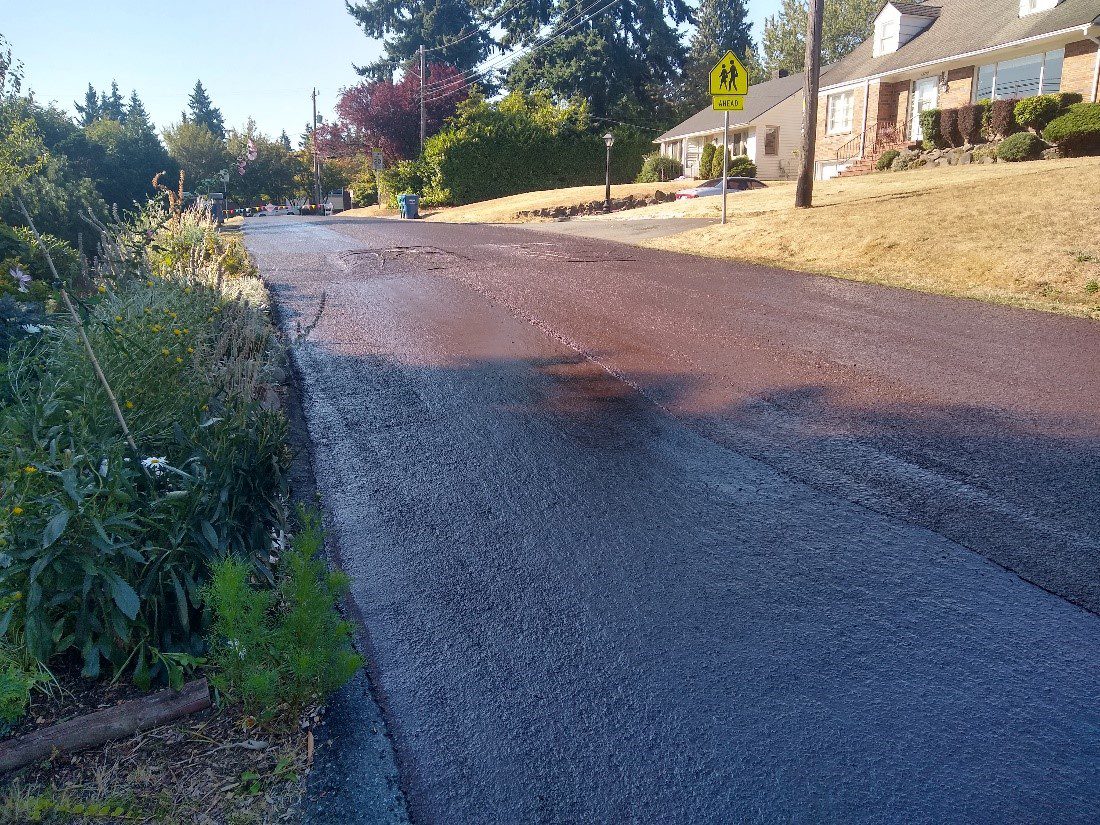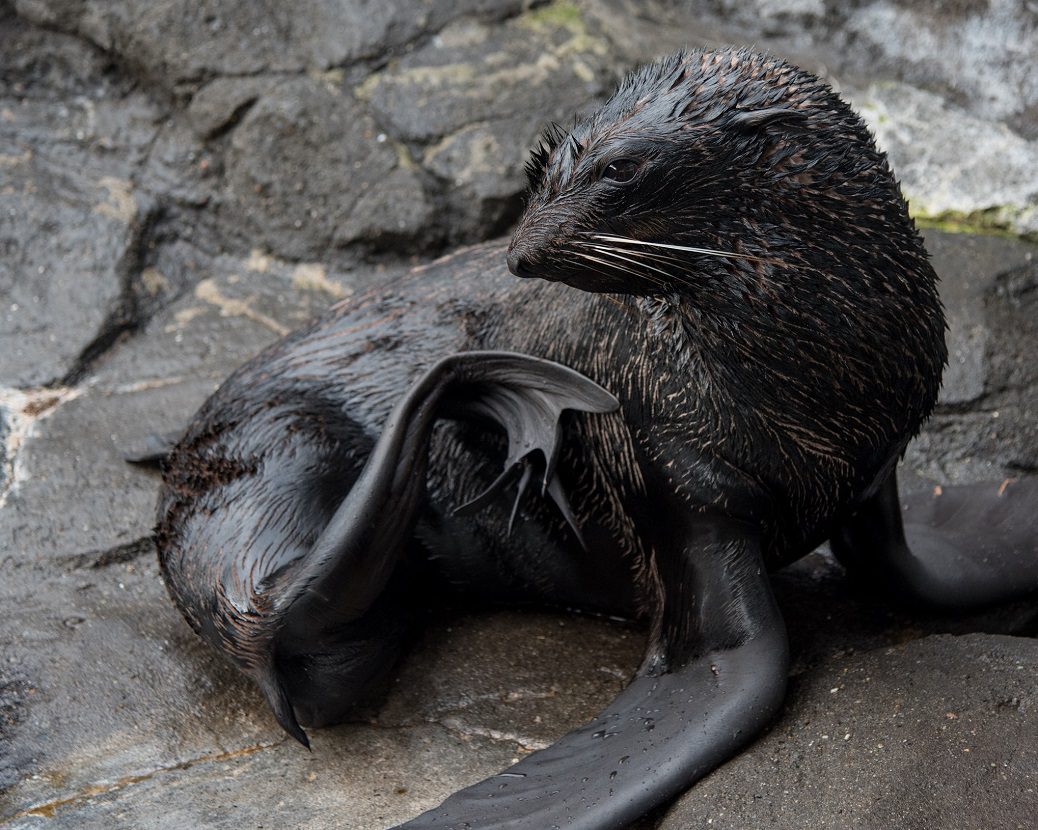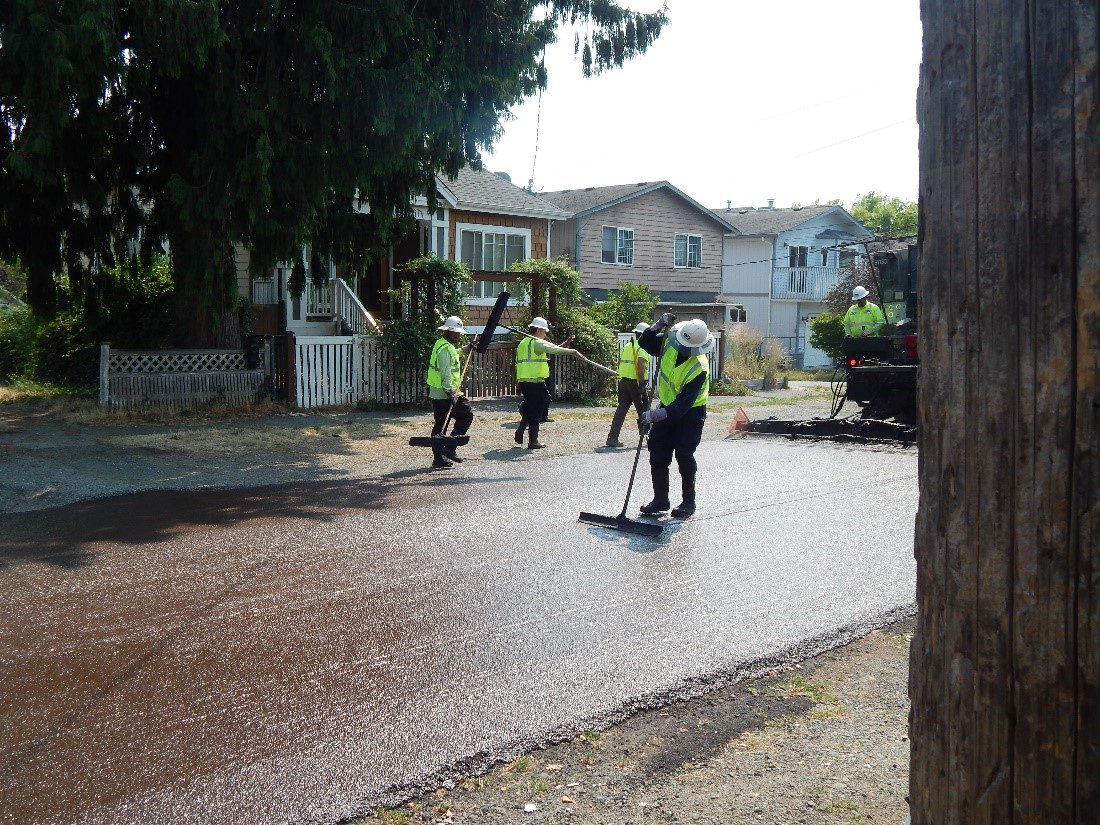 A residential street in Seattle after Slurry Seal treatment was completed. Photo credit: SDOT
A residential street in Seattle after Slurry Seal treatment was completed. Photo credit: SDOT Summary:
- Each year, our Slurry Seal program helps preserve and maintain street pavement across the city. The pandemic limited our capacity in the summer of 2020, so to help catch up, we completed resurfacing work in 3 neighborhoods this year, as compared to our typical 2 areas per year. This included North College Park/Haller Lake, Evergreen, and Rainier Valley.
- We want to sincerely thank all the community members and businesses in these neighborhoods for working with us on this large, complex effort. Your engagement and willingness to collaborate helped us minimize impacts to parking, building access, and business operations while the resurfacing work took place. Thank you again for your patience and support.
- The 2021 program yielded excellent results: we successfully resurfaced more than 200 blocks of city streets in these neighborhoods. This work helps extend the street pavement’s lifespan by approximately 5 to 10 years, supporting safer and more reliable travel on these routes for years to come.
- Please stay tuned for more information about next year’s Slurry Seal program, as we begin work to develop those plans in more detail. The latest information can be found on our Slurry Seal web page.
What is “Slurry Seal” – and why is it called that?
Slurry Seal is a protective sealant coat which extends the life of pavement. It is a thin, tough layer of asphalt emulsion blended with finely crushed stone for traction.
The name may sound a little odd – a close rhyme with “Furry Seal” – but we guarantee this road maintenance method has nothing to do with the cute sea creatures. You’d have to visit the Seattle Aquarium to see any real northern fur seals in action.

All jokes aside, Slurry Seal pavement treatment is a cost-effective method to renew the road surface and seal minor cracks and other irregularities. This preventive maintenance process protects the pavement from moisture penetration and oxidation.
Like painting a house, Slurry Seal creates a protective layer which preserves the underlying structure and prevents the need for more expensive repairs in the future.
This short YouTube video from the City of Los Angeles explains how Slurry Seal treatment helps protect and preserve local streets for today and for the future.
2021 Slurry Seal program construction
Here is a photo of our construction crews in action resurfacing the street as part of our 2021 Slurry Seal program implementation.

Proactive, ongoing outreach was essential to our success – thank you to community members for helping us deliver this work
Resurfacing this large volume of streets has some unavoidable effects and creates inconveniences to residents and businesses who live and work along the streets. Our outreach and communications team worked to proactively work with these community members to inform them of the upcoming work, listen to their concerns and specific needs, and adjust work in the field as much as possible to help accommodate these needs.
Our outreach process included:
- Mailing an initial notice letter to inform community members of the upcoming work
- Mailing a follow-up Frequently Asked Questions (FAQs) document to help address questions and clarify what to expect in advance of work taking place.
- Going door-to-door with a final construction notice to remind community members the day before work begins.
To reach community members in their spoken language, we also provided materials in Chinese and Vietnamese, and were prepared to translate and share the information in other languages, as needed.
In addition, our outreach staff directly responded to more than 200 phone calls and email inquiries. We coordinated the resurfacing work with local utilities and waste collection services, such as coordinating early garbage pickup in key areas, to help prevent any gaps in service. We also adjusted the timing of some street work locations, based on requests we received.
Based on these efforts, we delivered a successful program, and were able to complete all planned Slurry Seal resurfacing for 2021 – more than 200 blocks of city streets resurfaced! Thank you again to everyone who helped make this possible!
Did you know we also fill thousands of potholes on city streets each year?
- This year alone, we have filled more than 14,000 potholes, as of November 28, 2021.
- Winter weather is hard on our roads and contributes to new potholes forming. Our crews have been hard at work filling potholes this fall and will continue to fill them as they are reported.
- This year to date, we have filled 85% of potholes reported within 3 business days of receiving the request.
- Remember, we can only fix potholes that we know about! Help us by reporting potholes when you see them. Use the Find It, Fix It App, submit an online report, email 684-ROAD@seattle.gov or call us at (206) 684-ROAD [7623].Thank you!
- To learn more about where potholes have been reported and filled, check out our interactive Pothole Repair Status map.